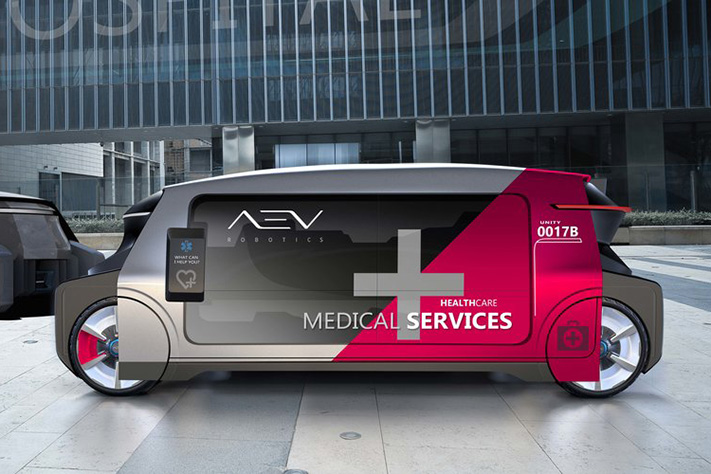
A Melbourne-based tech start-up is about to take the next step towards commercialising its innovative solar-powered driverless electric vehicle, which it hopes will be a global game-changer.
Applied Electric Vehicles (AEV) is four years into developing a prototype of its driverless Modular Vehicle System (MVS) that’s designed to cover short distances at low speeds but, unlike more conventional EV designs, can be charged by solar panels embedded into its roof.
According to AEV, the MVS will generate up to 60 per cent of its energy requirements from the sun and will have a smaller battery pack than ones currently used in EVs, which will allow for quick charging via a standard 240-volt socket.
The project, which had proceeded far enough to be showcased at the 2019 Consumer Electronics Show in Las Vegas, has received a significant boost in the form of a $2 million grant from the Federal Government’s Australian Renewable Energy Agency (ARENA).
Still in its infancy, AEV is led by two former General Motors executives; CEO, Julian Broadbent who was the Director of Global Advanced Portfolio Planning at GM, and Chief Design Officer Luciano Nakamura who was GM’s Advanced Designs Manager.
Their partnership with ARENA will assist them to complete a more advanced pre-production MVS prototype and send it through to the final design and testing stages.

The $7.65 million project is also being delivered in conjunction with Japanese company Teijin Limited, which is helping to develop the vehicle’s lightweight composite materials and manufacturing methods.
Multi-platform convenience
The MVS is designed for short driverless taxi trips at low speed and is based on a versatile platform that could be suited to a range of applications in delivery, agriculture, industrial and waste management, as well as passenger transport.

Broadbent said AEV’s work with ARENA is primarily focusing on passenger vehicles but the learnings will then be applied to other uses.
“The Modular Vehicle System will offer companies access to transport that is cost-effective, pedestrian-friendly, gentle on the environment and very customisable to their business needs,” he said.
“With ARENA’s assistance, we’ll be able to take our design to the next stage of development in utilising renewables for our autonomous electric vehicle and provide something potentially game-changing in the low-speed EV market.”
Solar innovation
ARENA’s funding will also go towards solving energy-related challenges such as selecting the most appropriate solar photovoltaic (or PV) technology for the solar roof, and optimising the mass, energy efficiency, solar gain and safety of the vehicle – solar PV is the same technology as used for rooftop solar panels on buildings.
A challenge for vehicles is neatly embedding the solar cells into the roof, which is something else that AEV is working on.

ARENA CEO Darren Miller said this is a great example of Australian innovation utilising renewable energy options in vehicles.
“EVs are expected to play an important role in the coming decade in reducing the carbon footprint of transport. We hope to see AEV commercialise a home-grown driverless electric vehicle and be among the first to unlock the global driverless EV market.
“There is significant opportunity in the low-speed vehicle market which is expected to gain considerable traction in cities, campuses and factories over the next decade that AEV could tap into.”

Miller reckoned AEV’s project could also unlock new applications for solar power such as integrating it into curved surfaces and demonstrating that solar PV can directly power high-efficiency electric vehicles.
Neither AEV or ARENA have provided a timeframe for the MVPs on-going development.




